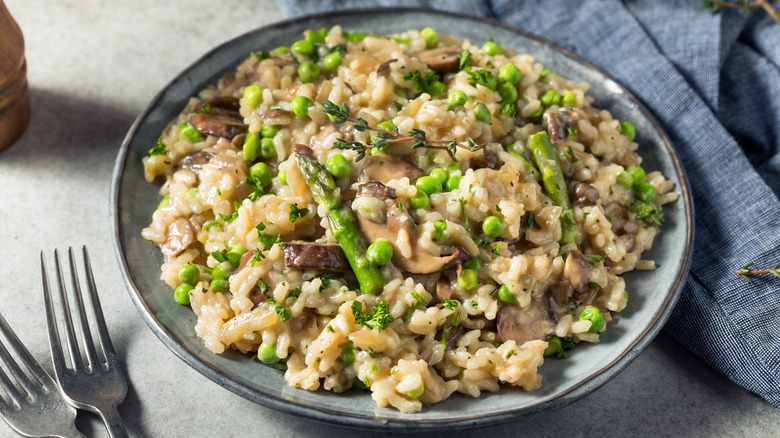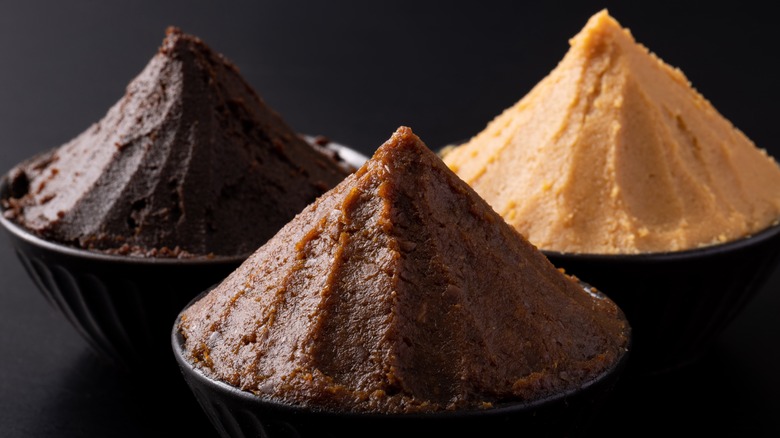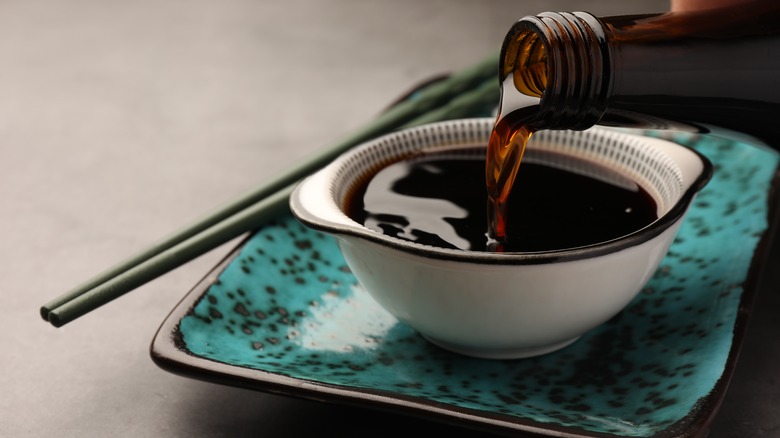The Unexpected Japanese Ingredient For Elevated Risotto
When you whip up a mushroom risotto, you'll be treated to a flavorful, savory, and creamy meal. But if you want to elevate your risotto from great to amazing, stir a bit of miso paste into your pot. The miso will bring depth, saltiness, and an extra savory taste to your rice and broth, making every bite intense with a rich, umami flavor. For centuries, miso has been a significant element of Japanese cuisine. To create this savory paste, soybeans have to be fermented in combination with other ingredients, such as rice, barley, nuts, and koji (a fungus used as a catalyst for the fermentation process).
Miso is commonly incorporated into sauces to add delicious flavor, which is why it can enhance the flavor of a classic tomato sauce or be a game-changing ingredient in pesto. But it can also be your unconventional yet delicious way of making risotto like a pro. There's more than just one kind of miso, though, and each type will leave its own distinct smell in your nostrils and flavor in your risotto.
How different types of miso elevate the flavor of your risotto
White miso has the mildest flavor of all the misos, and carries a subtle sweet flavor. It's fermented with lots of rice koji and boiled or braised soybeans. If you mix white miso into your risotto, it will add a savory punch to your dish. You'll find yellow miso in various hues ranging from yellow to light brown. Yellow miso has a longer fermentation process than white miso, and it's created with steamed soybeans that are fermented with a little bit of rice and a koji that comes from barley. Yellow miso carries a mellow, earthy flavor. Risotto infused with yellow miso will get a kick of that subtle earthiness and umami flavor.
Dark miso is typically darker in color. You'll find it in shades of red and dark brown and it is often classified as such. Red miso is fermented longer than any other kind of miso, and it's made with steamed soybeans and lots of koji from barley. Red miso has the strongest flavor with its salty, nutty, and intense umami notes. Mixing red miso in your risotto will result in a more intensely flavored dish, so be judicious with how much of it you use so it doesn't overpower your meal.
Use these ingredients as substitutes for miso in your risotto
If you don't have any miso, or you can't find any, you're not out of luck when it comes to giving your risotto a flavorful boost. In fact, there are ingredients that you can use that will make decent substitutes for miso. One of those ingredients is soy sauce. It's actually used most often to substitute for miso in Asian or Asian-influenced recipes, making it one of the delicious ways to use soy sauce. The briny taste of soy sauce will impart a similar flavor to miso into your risotto.
You can also substitute your miso paste for tamari in your risotto recipe, which has a similar flavor to soy sauce but is denser. If you want a strong textural match to miso, substitute it by mixing tahini in your risotto. You won't get that strong umami flavor you get with miso, but you'll get some nutty flavor into the dish from the tahini with a comparable creaminess to miso. Nothing will elevate your risotto quite like miso, though, as it'll bring delicious flavor and texture to your dish.


